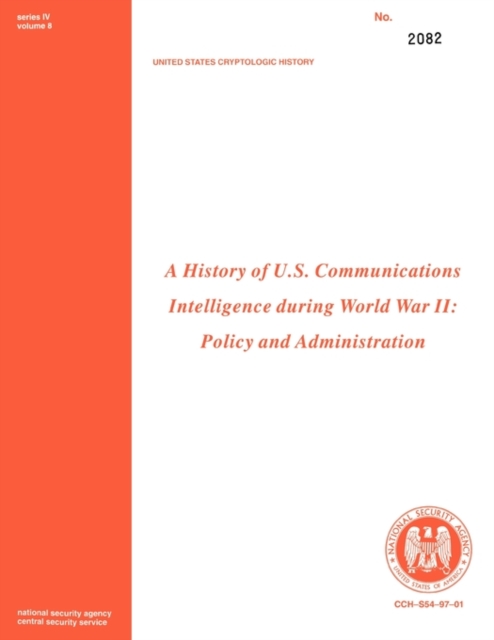With the onset of World War II, the American organizations responsible for the vital wartime function of communications intelligence (COMINT) were forced to change drastically. In addition to the daunting challenges of rapid operational expansion, the peacetime processes of U.S. Army and Navy COMINT proved inadequate to support active military operations on a worldwide scale. With national survival and individual lives at stake, more information, and its timely dissemination to both U.S. forces and those of its close ally, the United Kingdom, quickly became a top priority. "A History of U.S. Communications Intelligence during World War II: Policy and Administration" tells the story of the profound organizational changes wrought on U.S. COMINT by rapid expansion, urgent requirements for information, and international agreements. While the services never completely solved the problems posed by these challenges, by war's end they had created structures and implemented policies which, however cumbersome, achieved high levels of combat support. After covering the initial year of expansion, this study examines such issues as: The Army-British COMINT agreement of 1943 and the ENIGMA crisis; British-U.S. Navy COMINT agreements in 1943 and 1944; Jurisdictional problems regarding clandestine communications; Army and Navy movement to full cooperation, 1944-1945; Internal organizational developments in the Army and Navy. In addition to this comprehensive cover of organizational issues, "A History of U.S. Communications Intelligence during World War II" also sheds new light on the U.S.-UK controversy over U.S. denial of Alan Turing's access to scrambler technology developed at Bell Labs, conflicts between the Director of Naval Intelligence and J. Edgar Hoover's FBI over sharing intelligence information, and the tension between Army and Navy COMINT and the OSS, which had its own methods of obtaining data from British intelligence sources. Scholars and intelligence professionals alike will find much of value in this detailed and copiously documented study.










